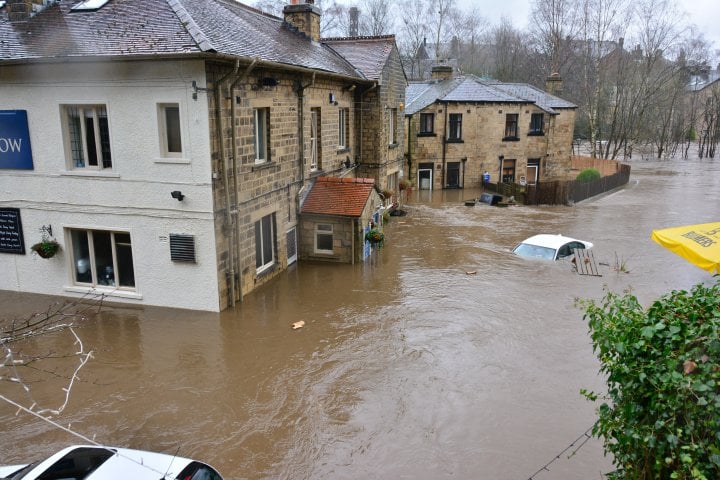Damage to your home’s flooring, furniture, walls, and ceilings caused by water can be extensive and costly. Mold and mildew can quickly grow once water damage occurs–within 24-48 hours, further increasing repair costs. And if left for extended periods, water can cause significant structural damage.
The level of damage to a building depends on how long the flooding has occurred. Learning how quickly manage water damage can encourage house and business owners to act quickly in the face of a water problem.
In addition, fixing the water damage will help keep the house safe for the next inhabitants in case you move out.
To repair water damage, use these methods:
1. Identify the Type of Water Damage
Each sort of water has its own set of dangers and threats, some of which can only be removed by a trained professional. Before beginning any DIY water damage repair, you must first determine the sort of water you are working with and take the required measures.
According to a report by the Institute of Inspection Cleaning and Restoration Certification, the three types of contaminated water that may destroy your property are clean water, greywater, and blackwater.
Homeowners may repair clean water damage (from rain, leaking pipes, etc.) and gray water damage. However, note that dealing with black water damage, such as that caused by sewage overflow or flooding from nearby rivers, is too dangerous for the average homeowner to attempt. If you have concerns about managing flooded areas, consult a water damage restoration expert with access to high-quality flood/water restoration tools.
2. Get the House Dried Up
If water is seeping into your home from a damaged or leaking pipe, turn off the water supply and contact a plumber immediately. Even if the flooding caused a power outage, you could still get water out of your house. You may dry your home with old towels, buckets, and mop heads. You can dump water on the lawn or flush it down the toilet if your community’s sewage isn’t blocked.
Floodwaters may be difficult to drain. The ideal way to get rid of a lot of water is using a pool pump, but a wet/dry vacuum or a big mop bucket will work, too. After removing the bulk of the water, fans or dehumidifiers can take care of the rest. You can also hasten the drying process by opening the windows. If the air is dry, mold won’t be able to grow as quickly.
3. Stop Mold Growth
After the flood water has been removed, inspect the affected areas for signs of mold growth. Keep in mind that mold can grow in places that aren’t immediately obvious, such as under furniture, behind rugs, or inside walls. Toxicity from mold exposure can cause asthmatic inflammations, respiratory problems, memory loss, lethargy, and other severe and long-term health issues in humans.
Apply a high-quality disinfectant to kill any germs that may have settled on your walls, furniture, and belongings after the afflicted areas have dried. Even after cleaning, you should be on the lookout for mold and mold spores. Non-hazardous commercial treatments are available as a fine powder that can be sprayed over the affected area and left to work overnight to eradicate any mold growth.
Treat any area in contact with the water with a bleach solution or another mold-prevention treatment. Make sure no mold spores survive by using a specialized mold preventative as directed by the manufacturer or by lightly spraying and wiping down with a bleach mixture. The problem of mold can be handled by the homeowner if it is localized and small, but it should be left to the experts if it is severe and extensive. Shut off the ventilation system, stay out of the area, and contact a mold remediation company if you find a severe mold problem.
4. Fix the Damage
Delaying repairs on a building’s damage because you plan to sell it is not advisable. The flooding could cause even more damage to the structure and make it uninhabitable for the new owners. Call in expert water damage repair experts before the problem gets any worse. You wouldn’t want potential buyers to try to underprice your property due to the damage.
To boost your chances of finding a serious buyer and, as proof, put the process of making any repairs to your house in writing. Ensure you list all the steps you take to fix the damage, including any receipts, which should be attached to the sales papers. The house’s buyers or next occupants will be relieved to learn that you took measures to maintain your home’s condition. This can help you improve your sale price. This is especially crucial if you are moving.
A potential buyer will have more faith in your word regarding the home’s other features if you provide them with this documentation. And if you are accused of knowing there were issues but disregarding them at the price of someone’s safety, having repairs documented will help.
In Conclusion
Any water source, such as a burst pipe or rain and flooding, can cause significant damage to a house. Water damage to your home’s walls, furniture, or carpet, not to mention the ideal conditions it creates for mold growth, should not be taken lightly.
Acting quickly and taking the proper measures may help you save some of your belongings and minimize the damage. The steps highlighted in this list should help you get the restoration process underway.
We hope you found this blog post on Getting Rid of Water Damage Before Moving, useful. Be sure to check out our post on How to Fix Common Water Damage Issues? for more great tips!
Have Experience in the Moving Industry? Want an Additional Income Stream? Work With All Around Moving!
Our unique Work With Us program gives the opportunity to experienced moving consultants to run their own Moving Consultant business from anywhere in the United States. Click here to learn more.






